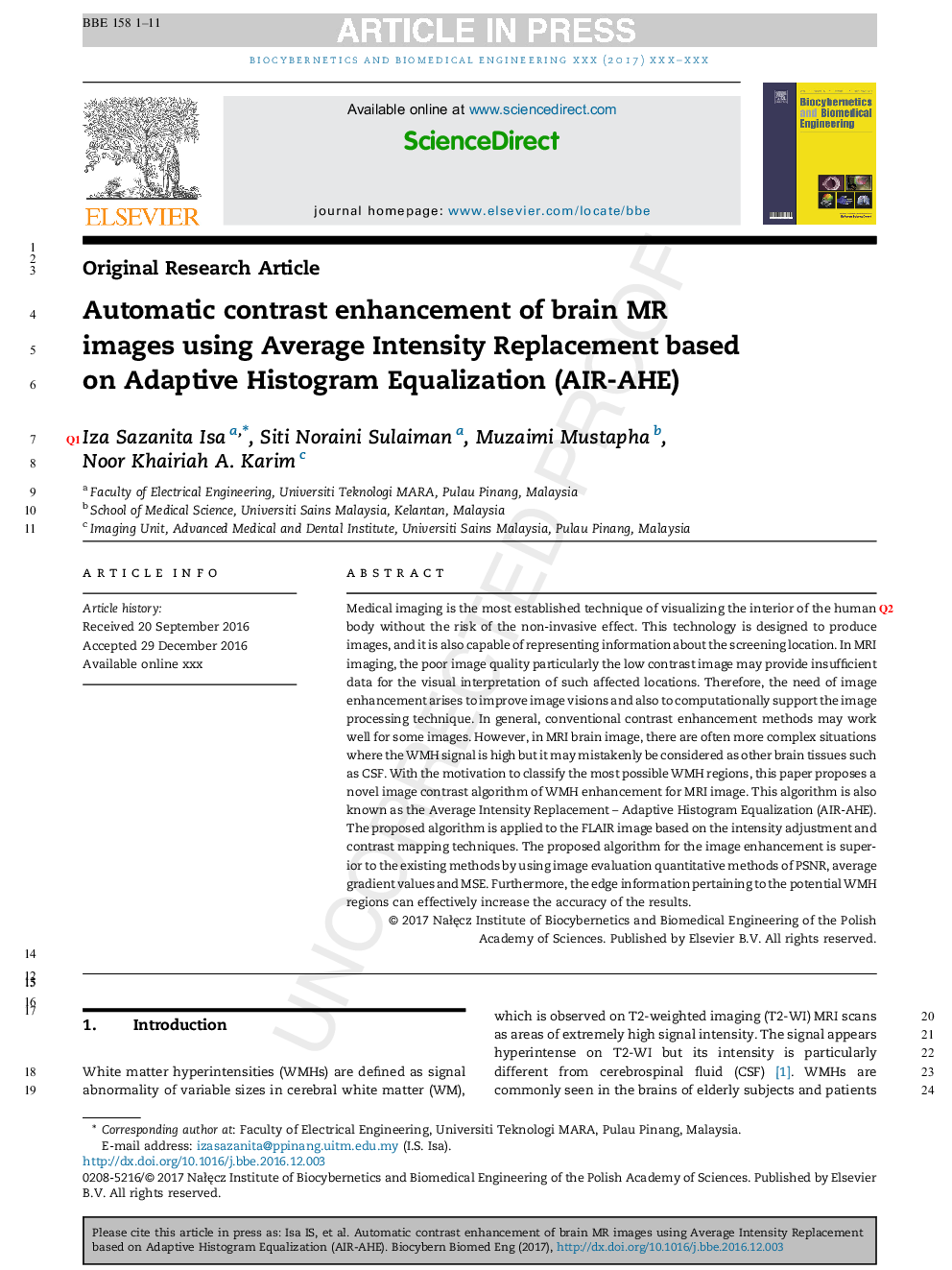| Article ID | Journal | Published Year | Pages | File Type |
|---|---|---|---|---|
| 6484243 | Biocybernetics and Biomedical Engineering | 2017 | 11 Pages |
Abstract
Medical imaging is the most established technique of visualizing the interior of the human body without the risk of the non-invasive effect. This technology is designed to produce images, and it is also capable of representing information about the screening location. In MRI imaging, the poor image quality particularly the low contrast image may provide insufficient data for the visual interpretation of such affected locations. Therefore, the need of image enhancement arises to improve image visions and also to computationally support the image processing technique. In general, conventional contrast enhancement methods may work well for some images. However, in MRI brain image, there are often more complex situations where the WMH signal is high but it may mistakenly be considered as other brain tissues such as CSF. With the motivation to classify the most possible WMH regions, this paper proposes a novel image contrast algorithm of WMH enhancement for MRI image. This algorithm is also known as the Average Intensity Replacement - Adaptive Histogram Equalization (AIR-AHE). The proposed algorithm is applied to the FLAIR image based on the intensity adjustment and contrast mapping techniques. The proposed algorithm for the image enhancement is superior to the existing methods by using image evaluation quantitative methods of PSNR, average gradient values and MSE. Furthermore, the edge information pertaining to the potential WMH regions can effectively increase the accuracy of the results.
Keywords
Related Topics
Physical Sciences and Engineering
Chemical Engineering
Bioengineering
Authors
Iza Sazanita Isa, Siti Noraini Sulaiman, Muzaimi Mustapha, Noor Khairiah A. Karim,
